
DunavNET – poultryNET
ID: 4369
June 2, 2022
Artificial intelligence platform for increased animal welfare and sustainability in livestock production.
ID: 3566
October 28, 2021
See.Sense was founded in 2013 when the company introduced a set of bike lights that are capable of reacting to the environment of the cyclist. The start-up was driven by a mission to enhance cycling safety, improve the overall cycling experience and promote cycling across the world. Today, the company is located in Northern Ireland and comprises a multi-disciplinary team of 14 people that bring together diverse skills in engineering, design, marketing, operations and data analytics. The reactive bike lights offered by See.Sense are commercialised in 70 countries and are being used by more than 100,000 cyclists around the world.
See.Sense offers a varied range of lights suitable for cycling both in every-day commuting as well as in sports. Hence, the reactive bike lights appeal to a broad audience, in which urban cyclists are the primary users. Besides selling directly B2C online, See.Sense is increasingly addressing B2B and the B2G segments.
All product design and development happen in-house: from industrial design to electronics and firmware. Whereas, manufacturing is carried out by local partnering factories to ensure speed of production, as well as consistency and product quality.

The incentive for See.Sense to develop reactive bike lights started in the early 2000s as co-founder Philip McAleese was working as a busy executive in Singapore. Striving to incorporate exercise into his daily routine, he took up cycling but quickly found himself feeling unsafe due to the close passes and near misses he would often experience on the metropolitan roads. Around that time, it was made European legislation that cars are fitted with DRLs[1], as this was proven to reduce the risk of collision with 5-10%. Understanding the increased visibility would benefit cyclists as well, Philip started developing his own bike lights. He quickly realised that consistent lightning required vast levels of power consumption, and that the need for visibility was explicit only at certain locations and under certain environmental conditions. While cycling one day, Phillip looked at the smartphone on his handlebars and reflected on the potential of its incorporated sensors.
“And so, I thought, what if we took that sensor technology and incorporated it into the bicycle lights to give it situational awareness.”
Philip McAleese, CEO at See.Sense
This patented technology, developed by See.Sense, empowers the light to flash brighter and faster in high-risk situations of cycling collisions (e.g., at junctions, roundabouts, filtering in traffic, approaching car lights etc.), and ultimately enables the performance of the light to be tailored to the risk of the cyclist.
See.Sense launched the idea on a crowdfunding platform in 2013 and were immediately able to validate a demand for the reactive bike lights in the cycling community. During testing and commercialisation of the product, See.Sense realised that the information gathered by the sensors about location, behaviour and performance of cyclists may hold much more potential if cleverly filtered and analysed. The company found themselves able to identify determinants in the data that increase the understanding of cycling infrastructure and the overall cycling experience. These useful data insights are the foundation for improving not just the journey of individual cyclists, but to improve entire cities and societies for all cyclists. This became the incentive of See.Sense to develop the product into a connected IoT solution.
“Cities are increasingly recognising that they are struggling with congestion, pollution and the need to help citizens become more active.”
Irene McAleese, CSO at See.Sense
The solution offered by See.Sense helps tackle these barriers by enabling more people to cycle and by acting as a key component in the worldwide call for smart cities. Since the initial engagement with IoT in 2015, the data focus of the company has grown rapidly.
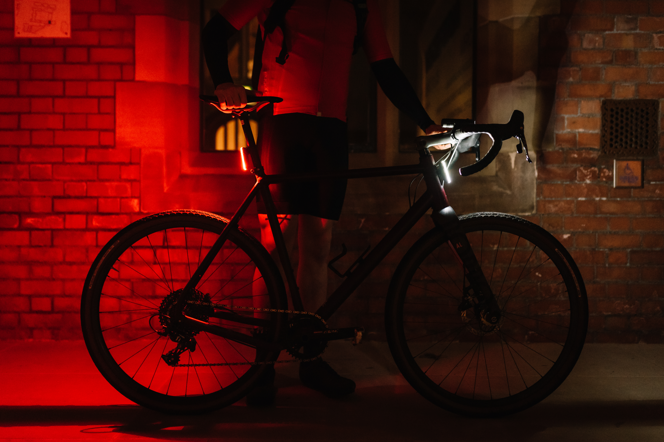
See.Sense provides an IoT solution in terms of the connectedness of the bike light based on the unique reactivity feature enabled by a patented sensor technology. Along with communications technology and algorithms, various sensors in the bike light monitor the environment up to 800 times per second. This enables the light to identify riskier moments on the road and immediately react by flashing brighter and faster to help the cyclist being seen.
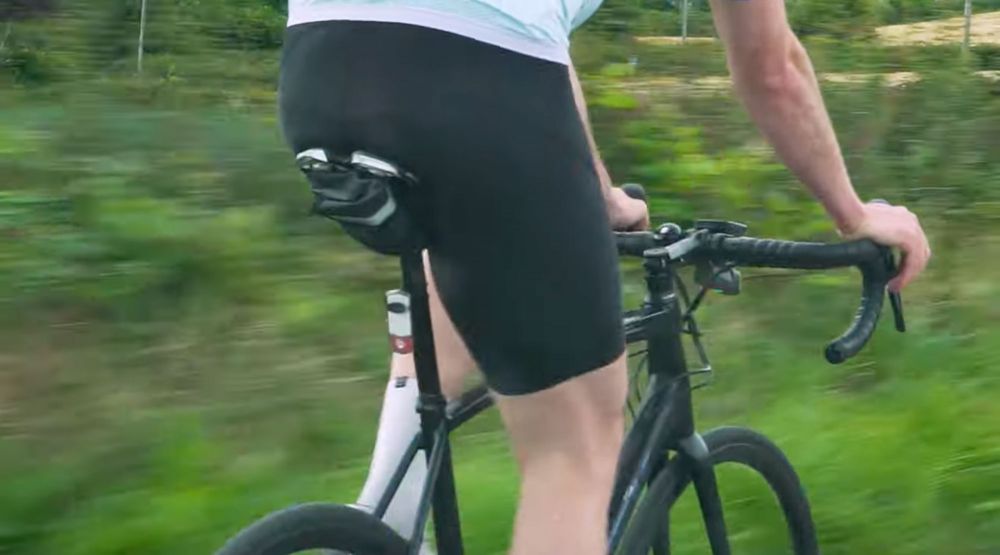
The bike light contains a number of individual sensors, such as accelerometer and GPS. The lights and sensors automatically turn on when the bike is in use and a timer turns the light off after three minutes of inactivity. The data insights collected by the sensors (e.g., acceleration forces, cycle positioning, road surface quality, swerving and breaking etc.) profiles what the cyclist is doing and what the environment around the cyclist is like. Edge processing provides the device with artificial intelligence and thereby the ability to process and react on the sensor data in real time.
The processed insights generated by the lights are then transmitted to a mobile phone application via Bluetooth. This compatible app offers the user access to unique statistics from rides and to receive power consumption notifications, crash and theft alerts.
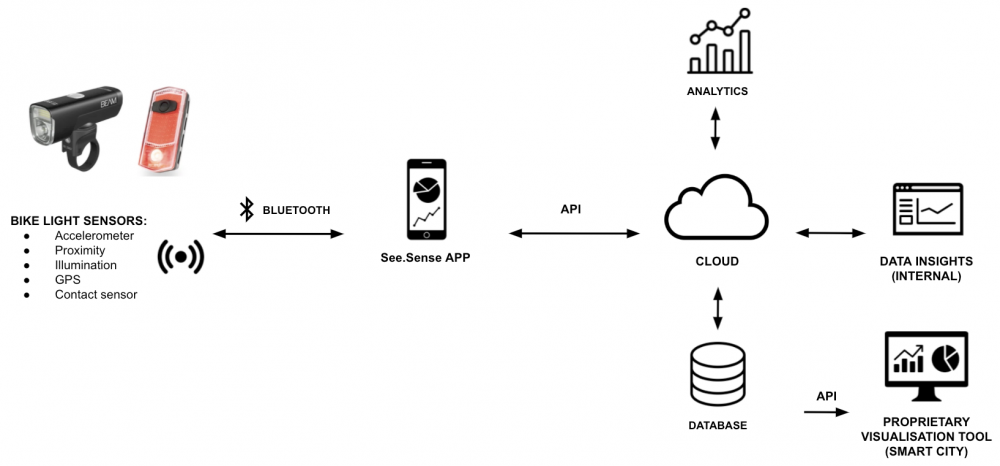
If data sharing is permitted by the cyclist, the route information is transmitted from the light via low energy Bluetooth to the user’s smartphone, and then to the cloud platform, which allows See.Sense to collect billions of sensor readings across countries. Through deep analysis on the aggregated data, it is possible to identify determinants for road issues and poor route conditions. These insights are then aggregated for anonymous sharing, either by an API[2], or by a proprietary visualisation tool developed by See.Sense, with planners and engineers to help cities understand the data in order to take substantiated decisions for making cycling safer, more convenient and more attractive.
“It is just a really nice circular model which benefits cyclists and also benefits cities.”
Irene McAleese, CSO at See.Sense
Although a supplementary feature of the See.Sense bike lights, some cyclists find it appealing that they, to some extent, can influence transport planning decision makers to improve cycling infrastructure and conditions for cycling in their local area. The prime value proposition for the end-user is of course the increased in-traffic-safety provided by the product. Considering this safety derived from daylight visibility as an isolated proposition, it is highly relevant, as up to 80% of cycling collisions happen in daylight hours (cf. UK figures), and the ability of the lights to autonomously react to the environment inevitably increases attention and thereby reduces the risk of collision. Part of the value proposition is the great quality and longevity of the lights as well, which rely on a USB-rechargeable battery designed for 500 recharge cycles. Hence, if cycling two to three hours every day, the battery needs to be charged once a week and will have a lifetime at 100% capacity for 10 years (and even after the 500 recharge cycles, the battery will still retain 80% capacity).
See.Sense is soon introducing a new consumer product, a cellular based GPS bike tracker (built on the cellular standard developed for IoT: LTE[3] cat1) that is able to collect data without having to rely on the user’s mobile phone. This initiative will make See.Sense increasingly attractive to the B2B segment as it enables both bike and scooter fleet operators to gain access to data that can help them manage their fleet more effectively. This is valuable in the case of shared vehicles, for tracking in the case of theft, detection of vandalism, monitoring of use frequency and facilitation of predictive maintenance.
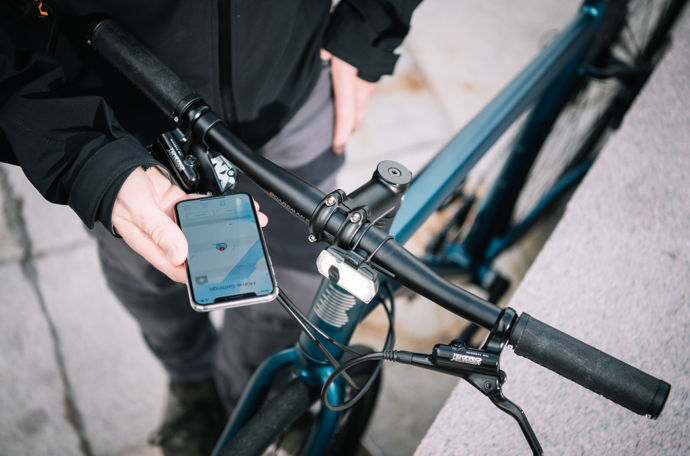
The data capability of See.Sense’s bike lights has proven valuable for entire cities. However, as a first mover in the field, and coincidential recognition of the significant IoT potential in the solution, the journey had challenges along the way.
To enable not only the collection, but storing of data as well, the bike lights had to be connected to the cloud. See.Sense figured that this could easily be solved by introducing a complementary mobile application to the analogue product. However, the hardware was fully functional and able to deliver the fundamental value proposition without being connected.
“A lot of people were like; why would I connect my bike light to an app?”
Irene McAleese, CSO at See.Sense
This made the company realise that they would have to be more customer centric in the design and provide a compelling reason for cyclists to connect their bike lights to the app. Hence, to make the IoT a valuable add-on to the hardware solution, from the perspective of the end-user, See.Sense built-in numerous features to make it more engaging. These include:
The data collected by the sensors inside See.Sense’s bike lights is made available for cities under a license. This data, which is shared in an aggregated and depersonalised way, protects the privacy of the cyclists whist being valuable for cities in two application areas in particular.
Firstly, the data is useful in cycle infrastructure planning and cycling route maintenance.
“How do you prioritise where to invest in cycle infrastructure? You can’t build bike lanes everywhere…”
Irene McAleese, CSO at See.Sense
Having data about the safety, conditions, use frequency and performance of cycling routes can help prioritise interventions and be a tool for city planners and engineers to become more data led. Understanding how people are moving across the city, their origin and destination patterns, can help in evaluating entire infrastructure networks as well as promote Intelligent Transport System (ITS) applications such as more optimal timing of a traffic light changes.
Secondly, the data can help in detection and prediction of cycling accidents. Until today, reporting of collisions and other incidents relied on the involved parties to make a report. However, unless it is a severe incident, people rarely make these reports. The data provided by See.Sense can be considered passive reporting.
“Once they have opted in to the See.Sense community and agreed to share data insights, then people can passively share their aggregated data without having to do anything. This really helps to address the under-reporting issue.”
Irene McAleese, CSO at See.Sense
It is further found that the swerving and braking data has a strong correlation with historical collision areas. Based on this data, it is possible to determine a statistical probability that a collision may occur at a specific site, thereby offering a lead indicator for high risk cycling areas.
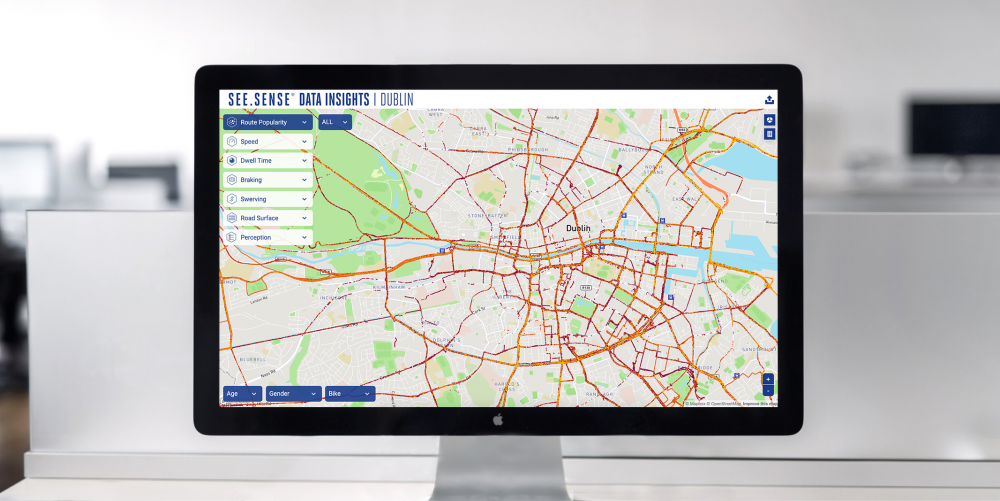
The development of See.Sense’s IoT solution is a significant contribution to the public agenda of promoting sustainable transport. The effort to increase cycling in cities is considered an environmental, social and economic asset as it positively contributes to health while reducing noise pollution, exhaust emissions and congestion problems. See.Sense directly addresses this agenda by providing insights that have never before been available in the area, helping cities to understand cycling behaviour and transform accordingly at a timely pace and on a continuous basis.
“We’re very proud of the fact that there is real merit to the data… This is actually something that has a chance to really transform cities – and we can be part of helping.”
Irene McAleese, CSO at See.Sense
The ambition to realize the societal potential of the solution is manifested in See.Sense’s outlook towards the future. The company is motivated to encourage more people and communities to use the data and to build and advance the dataset in terms of prediction modelling and risk assessment. This makes cycling more visible to policy makers and allows cities to take adaptive, data-driven decisions to become increasingly cycle-friendly.
“If we did not have an IoT product, we would just be a bike light, and then I do not think our company would have grown as much as we have.”
Irene McAleese, CSO at See.Sense
By nurturing the IoT aspect of the solution, See.Sense has cultivated an additional business model and expanded the revenue mechanism of the business, enabling it to capitalise not only on the hardware, but also on the data. Although the data capability of the solution has led to the penetration of a new market and grown substantially as a business area, the company still takes pride in delivering value in terms of obvious practical and tangible benefits to the end-users.
“As Founders we still take great delight in seeing our bike lights out in the wild.”
Irene McAleese, CSO at See.Sense
Spotting the bike lights in use and knowing that the solution provides value is the greatest outcome to See.Sense. On several occasions, the company has been contacted directly by users whom tell that the reactive bike lights have truly improved their cycling experience and even helped save lives. Furthermore the data insights collected have been used by cities to improve conditions for cycling, such as in Dublin, where the information gathered from the Smart Docklands 2021 project was used to inform the development of Dublin City’s most recent cycle infrastructure improvements. For a company that originally set out to improve safety for cyclists, these declarations are the ultimate reward.
See.Sense have learned a lot during the transformational journey of their solution from analogue to digital, and some of these learnings may have transmissible value for other actors in the IoT ecosystem.
“We found that for us a key thing was to get validation of the demand for the product from the cycling community.”
Irene McAleese, CSO at See.Sense
The above statement resembles the very first learning derived from See.Sense’s positive encounter with crowdfunding as enabler of the start-up. Seeking validation from the market, making sure that there is a demand for the product before investing further in the development, manufacturing and commercialisation, may be considered a premature indicator for whether a business idea turns into success or failure.
Another essential learning derives from the incorporation of IoT into hardware, leading See.Sense to conclude that at the end of the day, there has to be a tangible product that people find benefit from using. This has emphasized the importance of staying close to the customers, and understanding their needs, wants and desires in the solution. This learning and development should happen along the journey by collecting feedback regularly, which will allow rapid incorporation of the market’s demand into the solution and to continuously iterate and improve the experience.
See.Sense considers a number of points to be vital for the success of their IoT solution. Taking departure in the transformational journey of the solution, these points are compiled into a list of recommendations below:
1. User-friendliness and customer-led design
“Balancing what is possible from an engineering perspective with the actual needs of the customer has been super important.”
Philip McAleese, CEO at See.Sense
When designing an IoT solution, bear in mind that the solution should be kept as simple and user-friendly as possible, striving for impeccable connectivity and a minimum of friction for the user. Do not overdo technology – keep it practical, beneficial and convenient.
2. Focus on the value proposition
When integrating IoT, remember to differentiate between value for the customer and value for the firm, not letting one be at the expense of the other. It is key having a clear understanding of your business model and spending time to define your value proposition.
“We take pride in the fact that the bike light can stand on its own against other bike lights in the market – whether it is connected or not.”
Irene McAleese, CSO at See.Sense
3. Ecosystem co-creation
“A real benefit for See.Sense is that we have been able to co-create our solution and learn in partnership with experts from the cities as we evolved our proposition.”
Irene McAleese, CSO at See.Sense
The synergised leverage of partners is favourable for the spread, acceptance and refinement of a solution. To See.Sense, co-creation in terms of pilots in cities, proved crucial for the company to showcase the usability of their connected bike lights, for them to adapt and refine the solution to scale and for them to demonstrate the value of the solution.
4. Innovate to stay at the forefront!
Having achieved success in a market does not entitle a company to stay at the forefront in the future. IoT and the underlying technologies are changeable in nature, and therefore, being ahead of the innovation curve, delivering the latest features and leveraging trending capabilities is crucial for survival.
“Innovation drives adoption, and ultimately, margin for revenue as well.”
Philip McAleese, CEO at See.Sense
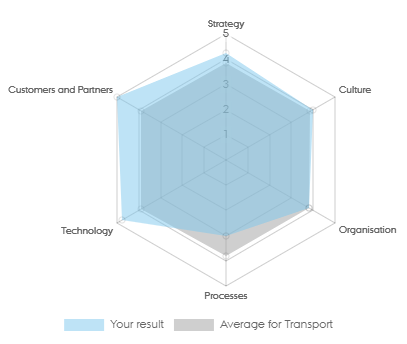
See.Sense assumes a high level of digital maturity with an overall score of 4.13. The score indicates that the digital capabilities of the company are vastly mature, and that they perform above average for the transport sector.
The Digital Maturity Assessment Tool is copyrighted by Associate Professor and PhD Annabeth Aagaard, Director at the Interdisciplinary Centre for Digital Business Development, Aarhus University. To get the digital maturity of your company mapped out, click here.
[1] DRLs (Daytime Running Lights): Lights that automatically turns on when a vehicle’s engine is started. They substantially increase the visibility of cars and other vehicles.
[2] API (Application Programming Interface): Software intermediary that allows two applications to talk to each other.
[3] LTE (Long Term Evolution): A standard for 4G wireless transmission data, the fourth generation of mobile network technology.
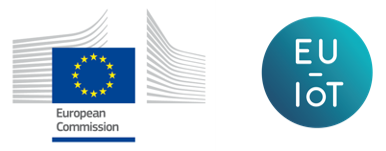
Copyright notice: © 2020 – 2023 EU-IoT Consortium.
This material was produced as part of the EU-IoT project, grant ID 956671, and is funded by the Horizon 2020 Framework Programme under topic ID ICT-56-2020.
EU-IoT is the European IoT Hub. The EU-IoT project works towards growing a sustainable and comprehensive ecosystem for Next Generation Internet of Things.
Source of origin: Information to document this use case originates from a network collaboration w. IoT Next Club (IoT community associated with the NGIoT initiative); Case period: 2021-2022.
